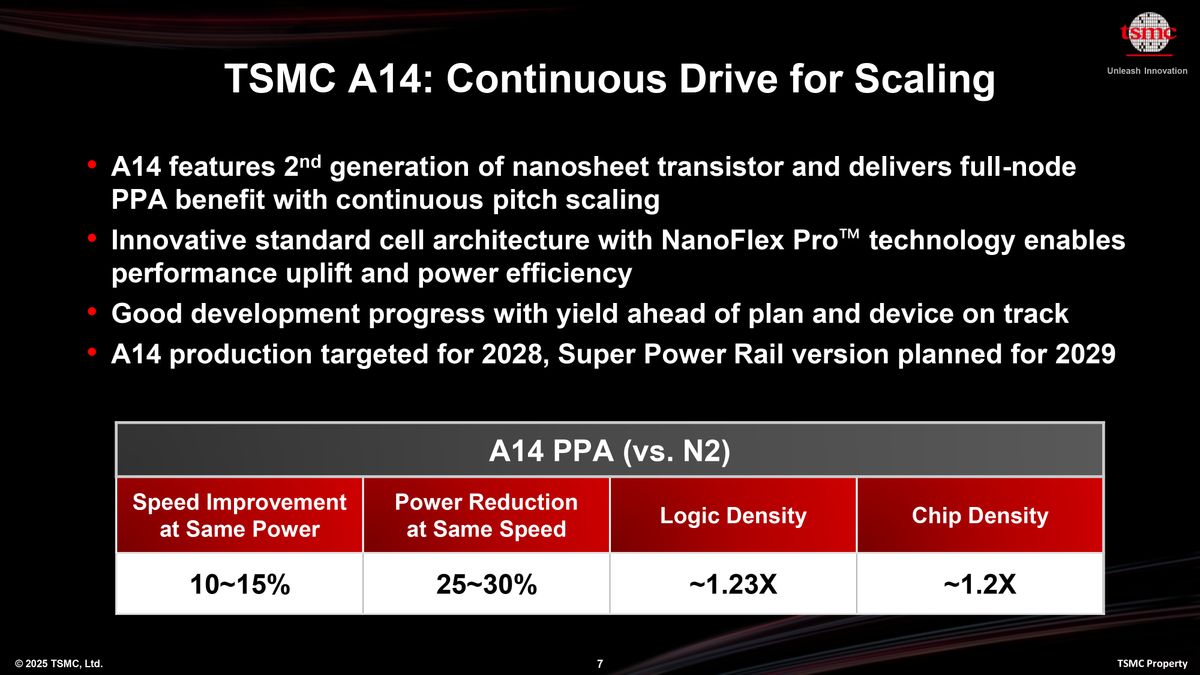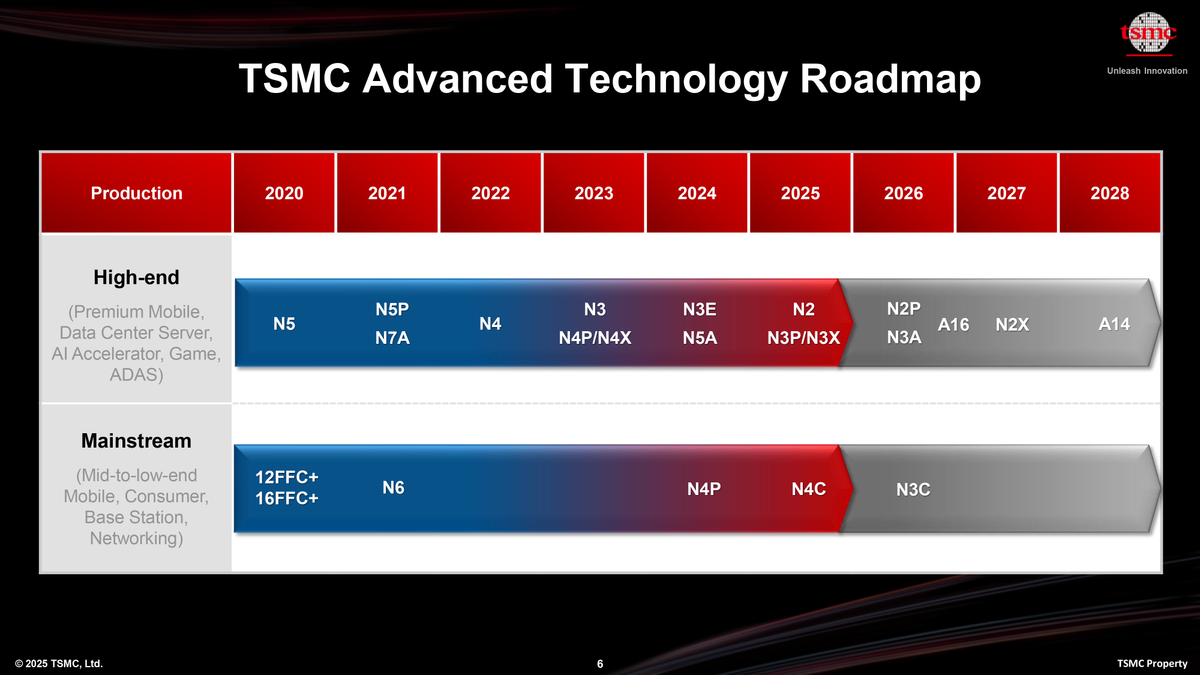The world’s leading chip manufacturer TSMC has just announced the new semiconductor technology A14 using the second generation GAA Transistor, promising to increase up to 15% of performance and reduce 30% of power consumption compared to the current 2nm process.
At the 2025 North American Technology Conference, TSMC announced the A14 semiconductor process (equivalent to 1.4Nm class), with many strong improvements in performance, electricity consumption and semiconductor density compared to the current N2 (2NM) process. A14 is the first process to use the second generation GAA Transistor, combined with the new Nanoflex Pro architecture to bring higher flexibility in the design. As planned, A14 will be mass produced by 2028 – but there is no rear power supply. This feature version will be released in 2029.

“A14 is a completely new generation of high -end silicon technology,” Mr. Kevin Zhang – Vice Chairman of TSMC – shared. “In terms of speed, this process increases efficiency by up to 15%, reduces electricity consumption by about 30%, and increases the logic density of at least 1.2 times compared to N2. This is a very significant step.”
A14 uses the second -generation GAA transistor structure and new standard cell architecture, helping to increase performance, reduce power and improve semiconductor density. Specifically, A14 provides performance improvement from 10-15% at the same electricity consumption, down 25-30% of electricity at the same frequency and semiconductor density increased by 20-23% depending on the chip design type.
However, unlike the upcoming A16 process, A14 will not have the back power supply (SPR – Super Power Rail). Instead, A14 still uses a traditional source network in front. TSMC said many applications in the client, Edge and specialized designs will still be highly effective with A14 without Spr, thanks to the advantage of the new GAA Transistor.

Another noteworthy point is Nanoflex Pro – Technology optimizing simultaneous design (DTCO) – helping chip designers flexibly customize the transistor cells to achieve the best performance, capacity and area for their applications. Although TSMC has not published a different technical detail between Nanoflex Pro and regular version, it is possible to expect Nanoflex Pro to bring deeper adjustments or algorithms and improved software.
TSMC has not yet specifically determined the time when mass production A14 in 2028, but based on the N2P and A16 schedule starting in the second half of 2026, the analysts predicted A14 could go into production in the first half of 2028 – to promptly serve commercial products in the second half of that year.


















